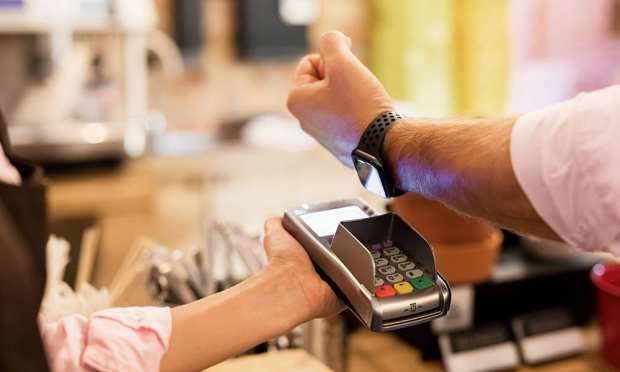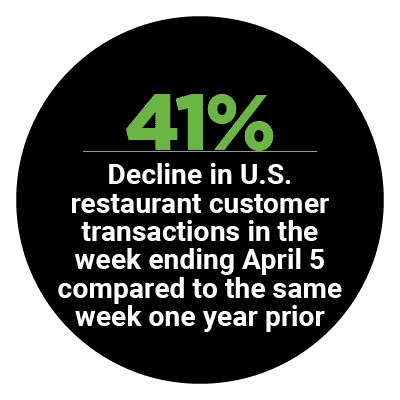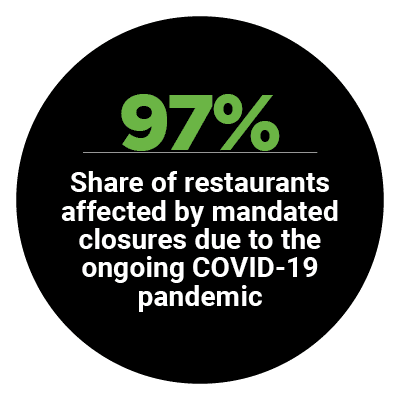As States Reopen, QSRs Are Learning What Consumers Need To Feel Safe

 Restaurants operators are being met with unprecedented economic fallout from the ongoing COVID-19 pandemic as they have been forced to get by on delivery and pickup order revenues. Full-service restaurants have been especially hard-hit due to closed dining areas and unpreparedness to quickly handle off-premises ordering. The pressure to come out on the other side of the lockdown ready to reopen responsibly is leading these establishments to accelerate plans for contactless transactions and creating safe spaces to retain the trust of diners.
Restaurants operators are being met with unprecedented economic fallout from the ongoing COVID-19 pandemic as they have been forced to get by on delivery and pickup order revenues. Full-service restaurants have been especially hard-hit due to closed dining areas and unpreparedness to quickly handle off-premises ordering. The pressure to come out on the other side of the lockdown ready to reopen responsibly is leading these establishments to accelerate plans for contactless transactions and creating safe spaces to retain the trust of diners.
The latest Order To Eat Tracker® examines the proactive measures the industry is taking to bounce back, from contactless in-store and online transactions to new in-store layouts for lowering the risk of contagion.
 Around The Order To Eat Landscape
Around The Order To Eat Landscape
Technology providers are moving quickly to help quick-service restaurants (QSRs) upgrade their online ordering systems. PAR Technology Corp., for one, recently released an online ordering platform PARk it, that enables operators to generate QR codes that customers scan with their mobile devices to view online menus and pay with Apple Pay, Google Pay or credit cards without the need to install an app.
Another effort is being led by Seattle-based internet of things (IoT) startup Minnow. To help facilitate safer food pickup, the company has unveiled its IoT-enabled contactless meal delivery Pickup Pod stations. Minnow’s pods, intended for use in colleges, hospitals, residential buildings and workplaces, feature insulated compartments to keep meals fresh and secure. Consumers can tap hyperlinks in text messages sent to their mobile devices to automatically open compartment doors and retrieve their items.
 Eateries are also moving fast to partner with third-party ordering apps to expand their reach. Fast-casual chain Chipotle Mexican Grill has announced a new partnership with delivery platform Uber Eats to offer contactless food deliveries to customers’ doorsteps. The app allows customers to leave detailed notes for delivery drivers regarding specific delivery instructions or requirements.
Eateries are also moving fast to partner with third-party ordering apps to expand their reach. Fast-casual chain Chipotle Mexican Grill has announced a new partnership with delivery platform Uber Eats to offer contactless food deliveries to customers’ doorsteps. The app allows customers to leave detailed notes for delivery drivers regarding specific delivery instructions or requirements.
For more on these and other stories, check out the Trackers News & Trends section.
Curry Up Now On Its Shift To Contactless Payments, Touch-Free Ordering
As some U.S. states are beginning to reopen, restaurants are faced with the challenge of offering touch-free payments as well as redesigning layouts for safe dining. For Curry Up Now, a San-Francisco, California-based fast-casual Indian street food chain, this means not only accommodating in-app payments for table orders, but also means temperature checks for guests and staff as well as eliminating the use of self-service soda machines and shared condiments to avoid contagion. In this month’s Feature Story, Founder and CEO Akash Kapoor of Curry Up Now discusses the proactive measures the chain has taken to revamp its ordering and payment processes, while applying lessons learned from reopening in Georgia to stores in other states.
 To get the full story, download the Tracker.
To get the full story, download the Tracker.
Deep Dive: How QSRs Are Preparing To Reopen Their Storefronts With Survival In Mind
QSR chains and restaurants are warming to the idea of reopening their storefronts, but going back to business as usual is not without its challenges. Restaurants must provide contactless environments and ensure stringent sanitization protocols are followed so customers feel safe and thus remain loyal. This is leading many to rethink their processes, from order placements to payment methods. This month’s Deep Dive explores why facilitating contactless payments and digital ordering processes will be vital to restaurants’ survival in the near future.
Read the full Deep Dive in the Tracker.
About The Tracker
The Order To Eat Tracker®, a PYMNTS and Paytronix collaboration, is a monthly report that examines the evolving restaurant space. The report highlights how fast food, fast-casual and QSR establishments are embracing technology, enhancing loyalty offerings and working with aggregated service providers to offer more seamless in-house and delivery ordering experiences and improve customer engagement.
